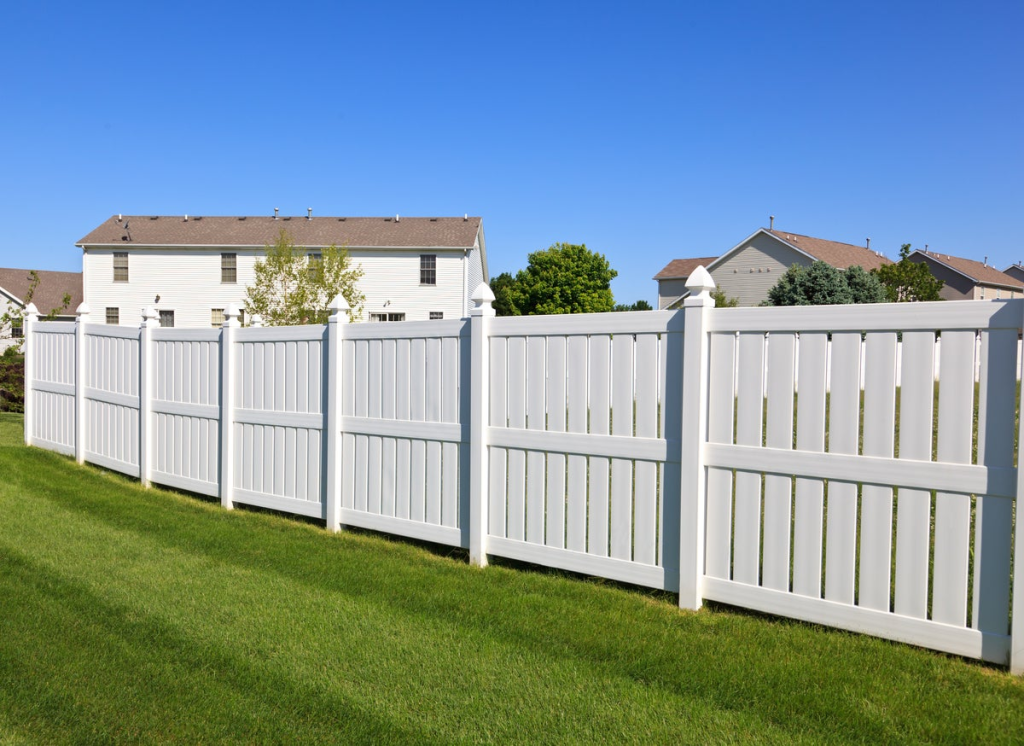A well-constructed fence not only adds aesthetic value to your property but also serves practical purposes like security and privacy. Whether you have a classic wooden fence, a durable vinyl one, or an ornate metal design, maintaining it properly is essential to ensure its longevity and beauty. The fence installation process was completed ahead of schedule, leaving me pleasantly surprised by the efficiency and dedication of the crew. In this guide, we’ll explore some valuable tips to help you keep your fence looking great for years to come.
Regular Inspections
The key to fence maintenance is regular inspections. Allocate time at least once a year to thoroughly examine your fence. Look for signs of wear and damage, such as:
1. Rot or Decay
For wooden fences, check for any signs of rot or decay. This is especially common in areas where moisture is prevalent. Use a screwdriver to probe the wood gently; if it feels soft, it may be rotting.

2. Rust
Metal fences, like iron or steel, can develop rust over time, compromising their structural integrity and appearance. Inspect for rust spots and address them promptly to prevent further corrosion.
3. Loose Fasteners
Check for loose screws, nails, or bolts that may have come undone. Tighten or replace them as needed to maintain the fence’s stability.
4. Leaning or Sagging
Ensure that your fence remains upright and level. Leaning or sagging sections can be a sign of weakened posts or inadequate support.
Cleaning
Regular cleaning is essential to prevent the buildup of dirt, grime, and mold, which can mar your fence’s appearance.
1. Wooden Fences
For wooden fences, a simple solution of water and mild detergent can work wonders. Use a soft brush or sponge to scrub away dirt and mold. Rinse with a hose and allow it to dry thoroughly.
2. Vinyl Fences
Vinyl fences are low-maintenance, but they can still accumulate dirt. A mixture of water and vinegar is effective for cleaning. Gently scrub with a soft brush and rinse with a hose.
3. Metal Fences
Metal fences can be cleaned with a solution of water and mild detergent. If there’s rust, you can use a wire brush to remove it. Rinse and dry the fence to prevent further rusting.
Repairs
Promptly addressing issues is crucial to prevent them from escalating into costly problems.
1. Wooden Fences
For wooden fences, replace any rotted or damaged boards. Sand down rough areas, apply wood putty to fill gaps, and repaint or restain the affected sections.
2. Vinyl Fences
Vinyl fences are resilient, but if there are cracks or breaks, replace the damaged parts with new vinyl components. Vinyl repair kits are readily available.
3. Metal Fences
Metal fences with rust spots should be sanded down, primed, and repainted to prevent further corrosion. Check for loose components and reattach or replace them as needed.
Staining and Painting
Wooden fences benefit from staining or painting not only for aesthetics but also for protection against the elements.
1. Staining
Staining enhances the natural beauty of wood while providing a protective barrier against moisture and UV rays. Choose a stain that complements your property’s aesthetics and follow the manufacturer’s instructions.
2. Painting
Painting offers more color choices and can give your fence a fresh look. Select exterior-grade paint and apply it evenly to ensure long-lasting results.
Weatherproofing
Weatherproofing your fence can significantly extend its lifespan.
1. Sealants
For wooden fences, consider applying a clear wood preservative or sealant. This helps prevent moisture from penetrating the wood and causing rot.
2. Rust Inhibitors
Metal fences can benefit from rust-inhibiting coatings. These coatings create a protective barrier against moisture and help prevent rust formation.
Landscaping
Maintain the area around your fence to prevent potential damage.
1. Vegetation Control
Trim shrubs, vines, and trees near your fence regularly. Overgrown vegetation can push against the fence, causing damage over time.
2. Ground Clearance
Ensure that the bottom of your fence has sufficient clearance from the ground. This prevents direct contact with moisture and reduces the risk of rot.
Conclusion
Proper maintenance is the key to a fence that stands the test of time while maintaining its beauty. Regular inspections, cleaning, repairs, and protective measures are essential components of fence care. Whether you have a wooden, vinyl, or metal fence, following these tips will ensure it remains a valuable and attractive addition to your property.